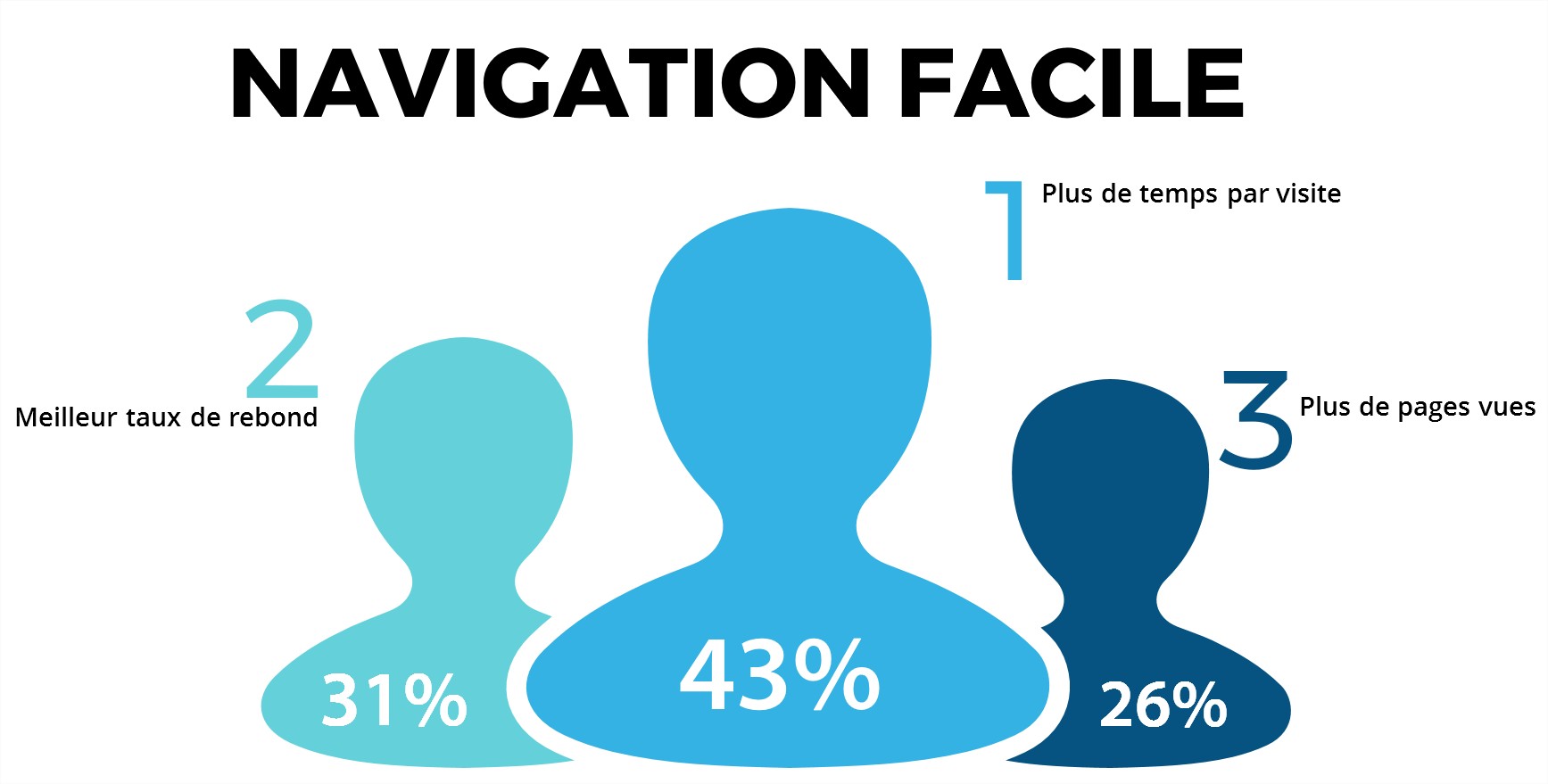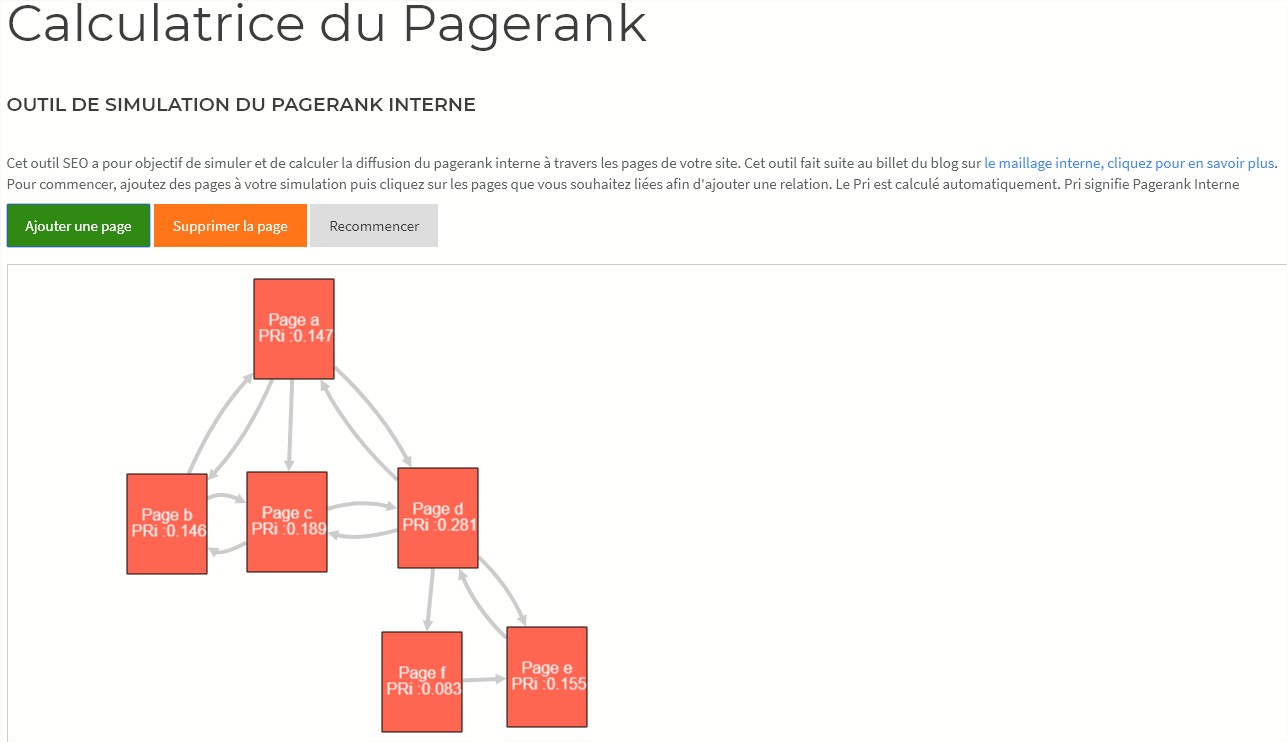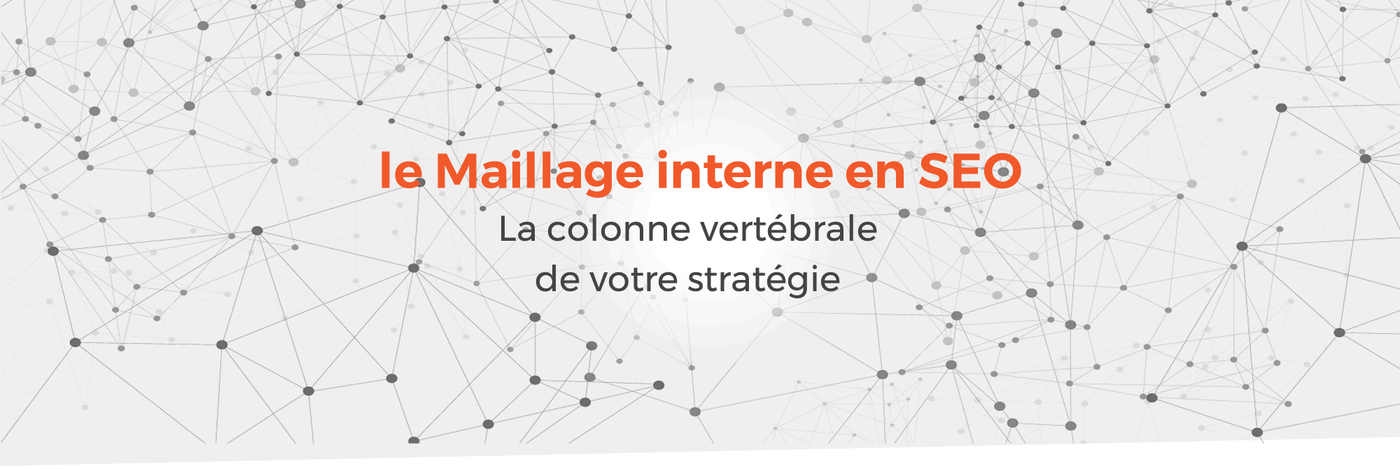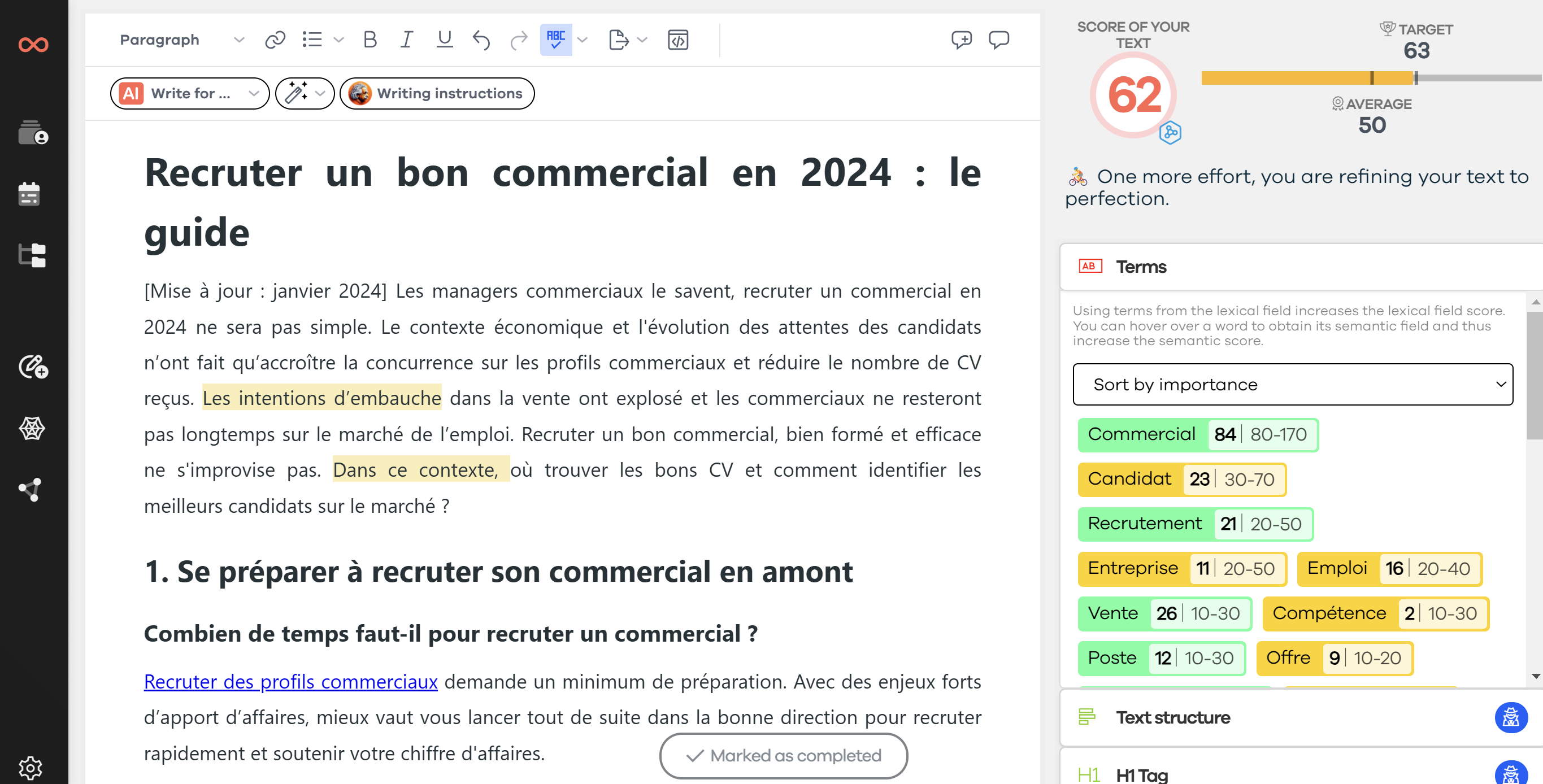Even if you're new to SEO, you've probably already heard about the importance of links and link building within an SEO strategy. Just as you were required to cite your sources in your academic papers, it's necessary to include links in your articles.
By adding a link, you increase the credibility of your content, provide evidence, and follow a scientific approach.
Most marketing managers focus on adding external links. Indeed, they consider backlinks to be an important evaluation factor for the quality of a page...
And they're right about that.
However, there's another essential factor that is often overlooked: internal links.
Internal links are crucial for the success of a page's SEO strategy. Being relatively stable, they represent a reliable value.
We will explore the benefits of optimizing internal linking (also called "internal linking" in French). But first, let's look at the basics of this technique.
🕷 Internal linking: definition?
By definition, internal linking generally refers to the organization of your website's internal links. These are the links on your site that point to another page within your domain.
Internal linking is a page with a hyperlink that leads to another page on the same domain, such as this link pointing to an article on SEO trends in 2019.
However, it's better not to overdo it. Three or four links will suffice. Use them sparingly and only when justified!
As you can see, most of the links in this post point to other pages within the same domain.
Internal linking allows Google and other search engines to easily understand the topic of other pages.
Let's look in detail at the benefits of internal linking. If you want to improve your general knowledge on the subject, I encourage you to read this comprehensive article first here.
💎 The benefits of internal linking
Creating an internal linking structure is an important aspect of on-site SEO.
First of all, the website owner has complete control over all internal links, which is one of the advantages of this technique. This is not the case for link building.
In addition to its SEO benefits, internal linking also has many user experience qualities. Your job, as an SEO specialist or consultant, is to create a user-friendly structure and use internal links to guide users and search engines to the most important pages on the site.
So, when designing your site's internal linking structure, you should be concerned with two things:
- Users: Allow users to navigate the site easily and efficiently.
- Search engines: Search engines take internal links into account.
Become the Yoda of internal linking!
Mastering internal linking will allow you to optimize your entire site. It will help you achieve your SEO goals.
🚤 Allow users to easily navigate the website

The site owner has complete control over internal links. Therefore, they can design the path for their visitors and make navigation a pleasant experience.
Users visit a site with a very personal intention and needs. Some are looking for information, others are looking for a description of your products or services, and still, others want to communicate with you.
These intentions and needs can be addressed through a well-thought-out internal linking structure. Try to direct the user to a specific page, or at least a relevant one, so they can get more information. Failing at this stage will have a negative impact on your SEO.
As you already know, search engines like Google appreciate websites that provide a quality user experience.
Your site's navigation and user experience have a direct influence on your SEO.
There are three types of metrics to monitor:
- Time per page: If users believe your content is worth reading because it provides answers, they will stay longer on your site. A high time spent on the page improves a website's SEO.
- Page views: Directing visitors to a more relevant page on your site increases the number of page views for your domain. A high number of page views benefits your website's SEO.
- Bounce rate: As you probably know, a high bounce rate is not beneficial for a site's SEO. Although we don't have complete control over the type of visitors who choose to click on our website, we are responsible for what they see and read.
So make sure your internal linking contributes to a better browsing experience.
🚀 Encourage visitors to stay on the site
The more time your visitors spend on your site, the more familiar they become with your content. Keep in mind that in the attention economy, the idea is to attract a highly targeted audience through content AND capture and retain their attention.
Internal links encourage users to stay on your site and reduce your bounce rate. You should always strive to reduce your bounce rate. The bounce rate measures the percentage of users who leave your site after visiting only one page.
The inability to offer users different content options that might interest them contributes significantly to the bounce rate. Retaining visitors for longer can have a significant impact on the site's SEO.
Ideally, users visit your web page, stay there, and read other content. So don't hesitate to entertain, educate, and inform your visitors as much as possible. Avoid directing your visitors to mediocre content.
Which content should you direct the user to?
Think about the buyer's journey of your target/visitor. If you write an article comparing the iPhone X and the Galaxy S9, the user is ready to read a detailed description of the iPhone X or the Galaxy S9, or even make a purchase!
Keep in mind that the purpose of internal linking is to provide information about your site and the user's intent. For this to bring real benefits, it's important to provide links to relevant and useful information. You will then succeed in retaining your visitors.
⛓ Set up the website's structure
Internal linking forms the foundation of a website.
The architecture or structure of a site refers to how you organize your site to provide a quality user experience.
The strength of a building lies in its foundations, and the same logic applies to websites. A well-thought-out internal linking structure forms a solid foundation for a website's on-page SEO.
The structure or architecture of a website takes the form of a hierarchical pyramid. The homepage serves as an internal link directing the user to a second level (sub-pages). This level is connected to a third level and so on (in case the visitor arrives through the homepage).
Keep in mind that the site's architecture should be designed with the user experience in mind.
In other words, create internal links to meet and satisfy user intent. This is how you will create the best possible architecture for your website.
Share the juice
Each link has a transferable value. This is the famous link juice in natural SEO.
This includes several elements such as the value of the page, its reliability, the relevance of its subject, and its authority. Good internal linking allows for proper direction of this juice, as it is transferable.
Links transmit the qualities of the page to other pages. This affects SEO.
Imagine that one of your pages is well-ranked on Google. This means that this page has significant link juice. You can share this juice with other pages you want to optimize.
How to share link juice effectively?
First, you should avoid sharing this juice with many different pages, as this will decrease the amount of juice each page receives. Transferring juice to a page that doesn't need it is a real waste.
I recommend mastering link juice by effectively using the rel dofollow and nofollow attributes of your links. We will cover this in more detail in a future article.
Help Google analyze your website
You may have heard that links are "votes of confidence" from other websites. They also help search engines understand the topic of your content. Search engines use bots to analyze your site and gather information that allows them to understand your content and pages.
They visit your website, follow your links, and index the pages. A strong and smart internal architecture will help bots find all pages easily, including the latest posts or those with few visits.
Internal linking also helps these bots understand which pages are most important. It guides and assists them in their indexing process.
For example, consider a company that sells different types of notebooks. It's likely that their main page is better ranked on the keyword "Moleskine notebook" (I love this type of notebook, I have a whole drawer full of them) than their dedicated page for this type of notebook. Including a link on the main page pointing to the Moleskine notebook page will help Google understand that it's relevant.
Internal linking, therefore, facilitates analysis and indexing. The easier a site is to analyze, the better it will be ranked. Remember that Google wants to offer the best content to users; it doesn't want to make a mistake.
Focus on your keywords
To design a simple structure that supports specific keywords, start by choosing a page and its keyword.
You can use my chapter on SEO keyword research to help you.
For example, if we want to be ranked for the term "Moleskine notebook" and have a page dedicated to this topic, we can highlight the page using anchor text (the clickable blue text).
This sends a clear signal to Google and demonstrates the relevance of the page for this keyword. By adding internal links pointing to your "Moleskine notebook" page, you improve its SEO and thus increase your organic traffic.
The anchor text should be relevant. Avoid keyword stuffing. Before Google's algorithm updates, it was possible to use the same text for all anchor texts. This allowed for high ranking on a keyword. Today, Google is smart enough to understand the context and implications of anchor text, in addition to the keywords used.
To learn everything about SEO link anchors, follow the guide.
Make sure your anchor texts are natural and unique. Avoid using exactly the same keywords.
Improve SEO
SEO is based on the concept of PageRank. Each link transmits a certain notoriety to the page it addresses. When indexing bots analyze your site and pages, they discover other pages and assign a probability of following these links.
With several million new web pages added every day, these bots are very busy. Therefore, a well-thought-out structure is a significant asset.
Discover the mathematical workings of PageRank and the reasonable surfer model in our dedicated article.
You can also use dedicated SEO tools for internal linking and make your content strategy more effective.
Can we do without an internal linking strategy?
First of all, the aforementioned benefits are hard to ignore: improved site SEO, maximizing user engagement, and advancing the link profile, to name just a few.
From now on, I recommend checking your old content and making sure it has a sufficient number of internal links.
Internal links require maintenance. It's essential to perform regular checks.
Given the latest updates to Google's algorithms, it's wise to work on your internal linking. After all, Google is unavoidable, and internal linking is one of the main factors determining website SEO.
Bonus : the PageRank calculation tool
The PageRank Test tool is an easy-to-use, free SEO tool that allows you to calculate and understand the distribution of internal PageRank.
To use it, go to the calculator (https://www.seoquantum.com/test-pagerank) and add the number of pages you want, along with the links, and the tool will automatically calculate the PageRank.

Conclusion
Implementing an SEO and content strategy has become essential for online businesses.
Neglect internal linking, and you'll miss out on potential customers and opportunities to optimize your site's SEO. Unlike link building strategy, this is the aspect most often overlooked by websites. Yet, with the help of internal links, you'll succeed in improving your SEO.
Internal linking is one of the most important elements of on-page SEO and, as such, can make all the difference.
Need to go further?
If you need to delve deeper into the topic, the editorial team recommends the following 5 contents:


